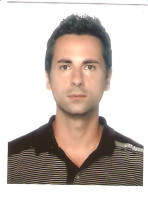Cybersecurity & Digital Resilience
Finance, Investment & Risk Management
Cyber Threats & Cybercrime
Banking & Financial Institutions
Fintech & Digital Finance
Insurance & Risk Management
Post-Doctoral Fellowships
Switzerland
2016.09.30
Making cyber fraud detection methods quicker and more reliable
Payment methods are undergoing a revolutionary change. The use of cash and checks has been steadily decreasing since the beginning of the 1990s, progressively being replaced by card transactions, and more recently by online money transfer systems like PayPal. In 2015, the ratio of paper-based to electronic transactions in Europe was approximately one to eight. While electronic payment methods facilitate purchases and boost business, they also represent a gold mine for fraudsters. In 2014, the overall worldwide losses from card fraud totaled over 16 billion US dollars, and the amount is expected to double by 2020. To minimize the loss suffered by banks, insurers and consumers, Dr. Bruno Buonaguidi is developing rapid detection techniques that could improve current methods, in particular by avoiding false alarms.
Optimal stopping theory: applying probability and statistics to fraud detection
"In current methods, the normal card user pattern of expenditures is constructed and then subsequent expenditures are analyzed to determine if there are deviations," explains Dr. Bruno Buonaguidi. "In our method, based on optimal stopping theory, the expenditures pattern of a card user is monitored constantly over time. When the probability of having a fraud exceeds a certain threshold, then we can declare its occurrence." To illustrate how optimal theory works, Dr. Bruno Buonaguidi uses the following comparison: "Imagine you are observing the evolution of a stock price. You want to know when to sell or buy the stock in order to make a profit. What you need to be looking at is ‘the change point’, the time at which a change occurs in the features of the stock. That way, you are able to react promptly and save or make money. By using optimal stopping theory, you can infer that ‘change point’ by monitoring the stock market data as it is collected. Coming back to our context, the same goes with the expenditures of card users."
Working on a theoretical model is the first step in Dr. Buonaguidi’s research plan. The second will be to develop a technology that will be used together with current methods for the detection of cyber fraud. The ultimate goal is to contribute to the challenging problem of rapidly and correctly disclosing frauds in electronic transactions. In this sense, Dr. Bruno Buonaguidi’s research could have an important impact on society. Indeed, the negative consequences of frauds in electronic payments are not only suffered by banks, but also by merchants, card users and insurance companies. Despite the progress made in the field of electronic fraud detection, especially artificial intelligence methods, the current cost of electronic fraud remains extremely high and is expected to increase in the future. Current methods would benefit from an additional instrument capable of disclosing fraud more rapidly, but also more efficiently to avoid unjustified blocks

Bruno
BUONAGUIDI
Institution
Finance Faculty of Economics Università della Svizzera Italiana
Country
Switzerland
Nationality
Italian
Related articles
Artificial Intelligence & Emerging Technologies
Cybersecurity & Digital Resilience
Ethical AI & Responsible Innovation
Gen AI & Deep Learning
Post-Doctoral Fellowship
Australia
Confronting the Challenges of AI-Generated Misinformation
Misinformation has emerged as one of the most critical global challenges of the past decade, with far-reaching consequences for democracy,... Read more

Paul
MCLLHINEY
University of Western Australia
Finance, Investment & Risk Management
Societal Challenges
Inequality & Poverty
Banking & Financial Institutions
Investment & Assets Management
Social Justice & Equity
AXA Project
The Role of Financial Institutions in Mitigating Rising Economic Inequalities
Inequalities have far-reaching consequences, including impeding human capital development, eroding social cohesion, exacerbating polarization, increasing vulnerabilities in the financial sector,... Read more
Organisation for Economic Co-operation and Development
(OECD)
Organisation for Economic Co-operation and Development
Economics & Global Development
Climate Change
Finance, Investment & Risk Management
Insurance & Risk Management
Sustainable Finance
Climate Adaptation & Resilience
Greenhouse Gases Emissions
AXA Project
Driving Innovation in Economic Policy Partnership Extension
In 2024, the AXA Research Fund and the Centre for Economic Policy Research (CEPR) renewed their strategic partnership aimed at... Read more
Centre for Economic Policy Research
(CEPR)